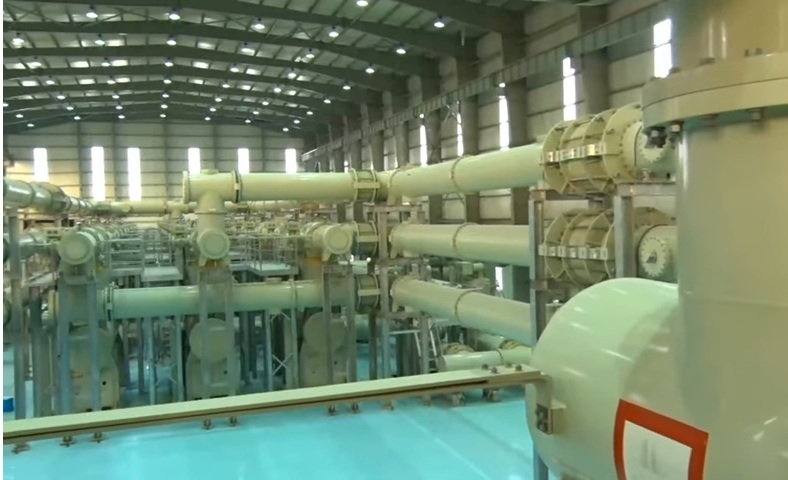The National Committee on Transmission is soon expected to deliberate on whether GIS (gas insulated switchgear) technology would be a better alternative to the originally proposed air-insulated substation, in connection with transmission systems planned for wind energy evacuation offshore Tamil Nadu.
The discussion of GIS versus AIS would also be extended to substations planned for transmission schemes associated with feeding renewable energy to upcoming green hydrogen plants in Andhra Pradesh and Tamil Nadu.
Offshore wind energy
It may be recalled that Power Grid Corporation of India Ltd (PGCIL) has been assigned on RTM basis, the transmission system associated with evacuation of wind energy (500 MW VGF) offshore Tamil Nadu. A key element of this system would be a 2×500 MVA, 400/230kV onshore pooling station at Avaraikulam, Tirunelveli district, Tamil Nadu.
PGCIL recently indicated that as the onshore pooling station is located very close to the coastal area, there was significant risk of corrosion due to the saline environment. This could adversely affect the functioning and reliability of substation equipment, PGCIL said. The Central PSU has therefore suggested the use of GIS technology for the aforementioned substation, adding that the use of GIS would also result in lower land requirement.
Green Hydrogen
Various transmission schemes are under the planning stage for feeding RE to upcoming green hydrogen/ammonia manufacturing plants located in Gujarat (Mundra), Andhra Pradesh (Kakinada) and Tamil Nadu (Tuticorin).
The issue of GIS versus AIS, however, is relevant to schemes relating to Tuticorin and Kakinada as they are located in coastal areas. For the record, the two substations are officially referred to as: “3×1500 MVA, 765/400kV Tuticorin (GH) substation (AIS)” and “3×1500 MVA, 765/400kV Kakinada (GH) substation (AIS),” respectively.
Now, a Task Force on “Cyclone Resilient Robust Electricity Transmission and Distribution Infrastructure in the Coastal areas,” in its report of May 2021, recommended the use of GIS installations up to 60 km from the coastline. These installations also need to be located above the historical water stagnation level, logging level or highest flood level, the report said.
CTUIL proposes GIS
In view of all reasons discussed above, Central Transmission Utility of India Ltd (CTUIL) has recommended the use of GIS technology for the Avaraikulam, Tuticorin and Kakinada substations. NCT is expected to deliberate on the matter in its next meeting.
It may be noted here that the ISTS scheme involving Tuticorin substation is currently under bidding with RECPDCL as the bid process coordinator. The scheme is known as “Transmission system for proposed green hydrogen/green ammonia projects in Tuticorin area” and is housed under project SPV “Tuticorin Power Transmission Ltd.” NCT’s decision on the use of GIS technology could mean revision in the bidding documents, potentially prolonging the bidding process.
Cost implications
CTUIL has estimated that there would be a 4.2 per cent increase in cost estimates if the choice of technology is switched to GIS from AIS. Currently, the three AIS substations are estimated to collectively cost Rs.9,899 crore and this would increase to around Rs.10,316 crore if GIS technology were deployed.
Featured photograph is for representation only

